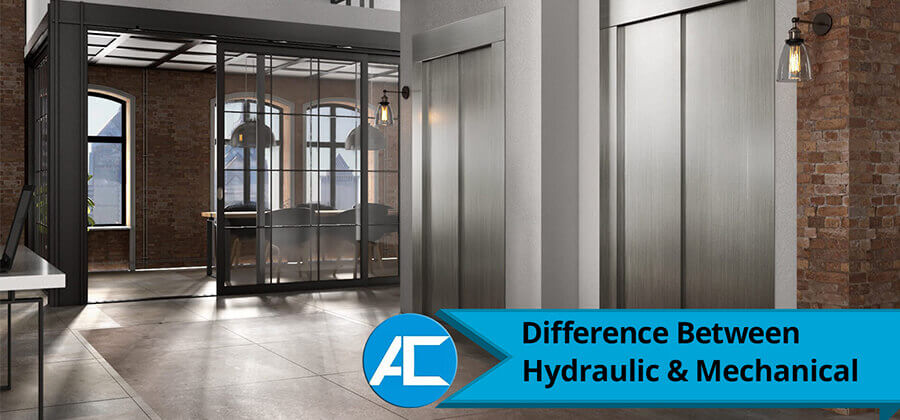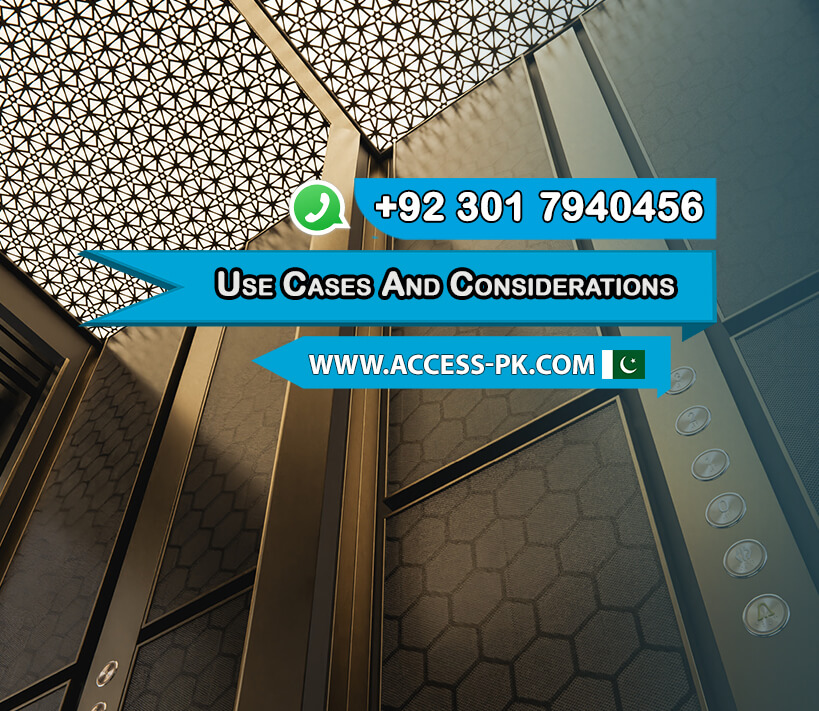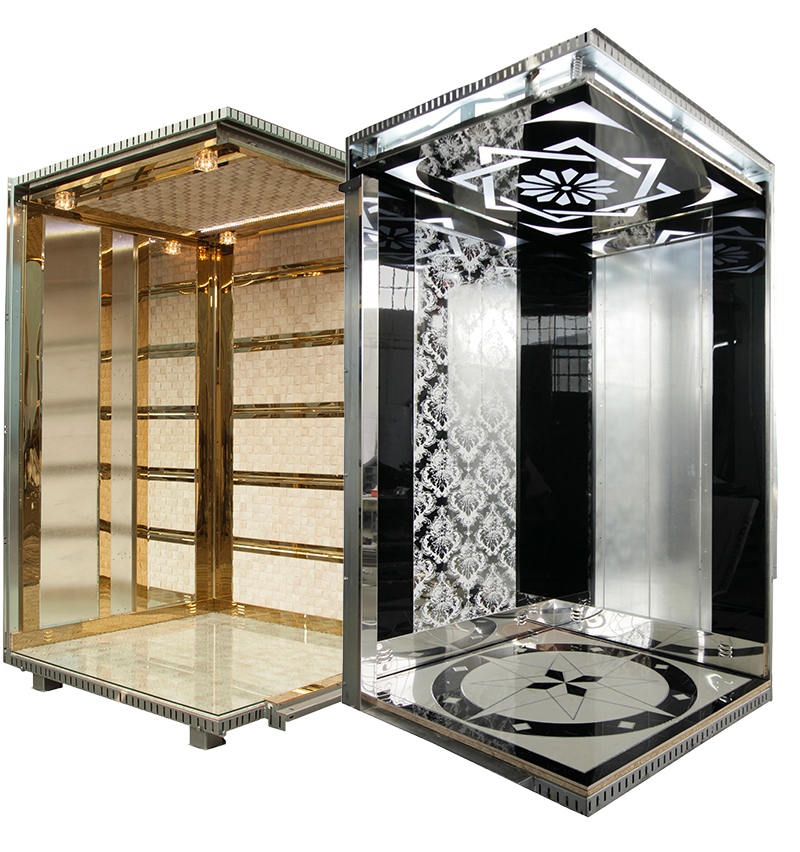Hydraulic and mechanical lifts are two distinct lifting systems that transport people and goods between different levels. Understanding their mechanisms and applications is essential for making informed decisions about the right lift system for a specific setting.
Hydraulic lifts operate on fluid mechanics, utilizing pressurized liquids to raise and lower the elevator car. The system comprises a hydraulic cylinder, a fluid reservoir, a pump, and control valves. When the lift is activated, the pump directs hydraulic fluid into the cylinder, causing the piston to move upward, elevating the elevator car. Conversely, releasing the fluid back into the reservoir allows the car to descend smoothly. Hydraulic lifts are known for their quiet operation and ability to handle heavy loads efficiently, making them suitable for residential and commercial settings. Additionally, these lifts require less maintenance, reducing long-term costs for owners.
In contrast, mechanical or traction lifts rely on cables, pulleys, and counterweights. A traction system typically consists of an electric motor, cables attached to the car, and counterweights that balance the load. When activated, the motor pulls the cables, lifting the car to the desired floor. The motor’s direction is reversed to descend, and the counterweights aid in the controlled descent. Mechanical lifts are often preferred in taller buildings, as they can efficiently transport people to significant heights while minimizing the required space for machinery. Moreover, they are more energy-efficient than hydraulic lifts, as they only consume power during vertical motion.
Various factors must be considered when choosing between hydraulic and mechanical lifts. The intended usage, building structure, and budget constraints play significant roles in decision-making. Hydraulic lifts are commonly found in low to mid-rise buildings, such as homes, offices, and hotels, where their high weight capacity and smooth operation make them ideal for transporting people and goods.
Get Free QuotesOperating Principles of Hydraulic Lifts

Hydraulic lifts function based on the principle of Pascal’s law, which states that a change in pressure applied at any point in an enclosed fluid will be transmitted equally in all directions. The lift system comprises a hydraulic cylinder, a fluid reservoir, a pump, and control valves. When the lift is activated, the pump directs hydraulic fluid into the cylinder, causing the piston to move upward. This upward movement raises the elevator car, carrying its occupants or cargo to the desired level.
One of the major advantages of hydraulic lifts is their ability to provide a smooth and quiet ride. The incompressible nature of hydraulic fluids ensures that the elevator car moves steadily, reducing vibrations and noise during transportation. This feature makes hydraulic lifts ideal for residential and commercial applications where occupants value a comfortable and peaceful experience. Additionally, hydraulic lifts can be precisely controlled, allowing for accurate positioning and alignment with each floor.
The simplicity of the hydraulic lift’s design contributes to its reliability and ease of maintenance. With fewer moving parts compared to mechanical lifts, fewer components are susceptible to wear and tear. Consequently, maintenance requirements are reduced, leading to cost savings over the lift’s lifespan. Moreover, the hydraulic system’s self-lubrication helps prolong the equipment’s longevity and ensures consistent performance.
In conclusion, hydraulic lifts operate on fluid mechanics principles, utilizing Pascal’s law to raise and lower elevator cars smoothly and efficiently. The pressurized hydraulic fluid in the cylinder enables these lifts to easily handle heavy loads, making them suitable for various applications. With their quiet and reliable operation, hydraulic lifts provide a comfortable transportation experience for occupants while requiring minimal maintenance. To Understand the operating principles of hydraulic lifts is essential for appreciating their advantages and choosing the most appropriate lifting solution for different settings.
Get Free QuotesUnderstanding Mechanical Lifts

Understanding mechanical or traction lifts involves grasping their operational principles, advantages, and suitability for various applications.
Mechanical lifts rely on a traction system that employs cables, pulleys, and counterweights to move the elevator car. An electric motor drives the movement, pulling the cables to lift the car to the desired floor. Reversing the motor’s direction allows the car to descend, with the counterweights assisting in the controlled lowering. This mechanism ensures efficient vertical transportation, making mechanical lifts well-suited for tall buildings with multiple floors.
One of the key advantages of mechanical lifts is their energy efficiency. These lifts only consume power during vertical motion, minimizing electricity usage when the elevator is stationary. As a result, mechanical lifts are a preferred choice for eco-friendly and sustainable building designs, as they help reduce energy consumption and lower operational costs.
The design of mechanical lifts allows for space optimization within the building structure. Unlike hydraulic lifts, mechanical lifts do not require a separate machine room, as most equipment can be installed directly within the elevator shaft. This space-saving feature makes mechanical lifts ideal for buildings with limited space.
Additionally, mechanical lifts offer precise and smooth ride quality. Using cables and pulleys ensures a controlled and gentle motion, minimizing vibrations and providing a comfortable experience for occupants during transportation.
Get Free QuotesUse Cases and Considerations

Hydraulic lifts find extensive use in low to mid-rise buildings, such as residential complexes, offices, and hotels. Their ability to easily handle heavy loads makes them ideal for transporting people and goods. Hydraulic lifts provide a smooth and quiet ride, ensuring a comfortable experience for occupants. Moreover, these lifts require less maintenance, leading to cost savings over time.
On the other hand, mechanical lifts are commonly deployed in taller buildings where efficient transportation to significant heights is necessary. Their energy efficiency makes them a preferred choice for environmentally conscious building designs. Additionally, the space-saving advantage of mechanical lifts, with most equipment installed within the elevator shaft, allows for better utilization of available space. However, mechanical lifts generally have a lower weight capacity than hydraulic lifts, which may limit their use in applications requiring heavy-load transportation.
When considering lift systems for a building, several factors must be considered. The intended usage of the building, such as residential, commercial, or industrial, influences the choice of the lift system. Mechanical lifts are well-suited for high-rise buildings with multiple floors due to their efficient vertical transportation capabilities. Conversely, hydraulic lifts may be preferred for low-rise buildings requiring heavy load handling. Budget constraints are another crucial consideration, as different lift systems come with varying installation, maintenance, and operation costs.
Access Technologies, owned by Imran Rafi, is a reputable lift provider that offers a wide range of lift solutions to meet diverse requirements. Consulting with lift experts like Access Technologies ensures that all pertinent use cases and considerations are thoroughly evaluated, allowing for the selection of the most appropriate lift system tailored to the specific needs of the building. The expertise and guidance trusted lift providers provide contribute to the safe, efficient, and reliable operation of the lift system over its entire lifespan.
Get Free Quotes



